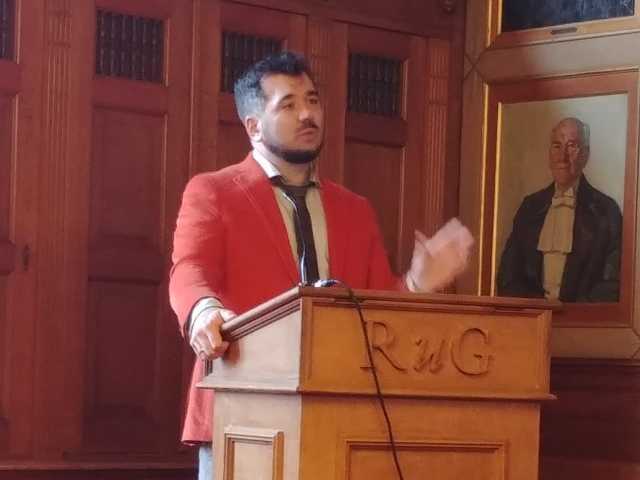Spatial Planning Lecture by Prof. Kristof van Assche
| Date: | 09 March 2018 |
| Author: | Ciska Ulug |

The reality effects of policy and planning
Despite attempts by policy makers and planners, there is always a discrepancy between what is laid out on paper and what is translated into reality. While the unrealistic expectations of this technical rational approach are, perhaps, old news for planners, how to actually cope with such effects, leaves much to be learned. Kristof van Assche, professor of Planning Governance and Development at the University of Alberta, addressed potential management strategies of these so called “reality effects” in the Academy building on Wednesday afternoon.
Beginning with a historic overview (and a reference to his “good friend” Machiavelli), van Assche set the scene, by introducing the romanticized trust in the power of bureaucratic policies, characteristic of modernist thinking. This fantasy is often trodden upon from all sides of the political spectrum, whether it is neoclassical economists critical of state intervention, constructivists suspicious of a “planned” reality, and even (my personal soft spot) participatory “localist” planners on the lookout for potential injustices. Nevertheless, when executed, policies often have unintended results and the potential to change reality. Understanding the context of governance processes is therefore necessary to gain a broader illustration of how policies actually materialize.
Van Assche continued to outline six distinct points necessary to consider in order to optimize and manage reality effects of policy and planning, from a government and planning perspective. Highlights included understanding the starting point and histories of community actors, observing and adapting on one’s own self-transformation, managing expectations from the public, and crediting informal institutions and the beliefs and values they might represent.
While these points are meant to assist policy makers and planners in addressing the multiplicity existing in our cities and regions, the lack of a “one-size-fits-all” prescription can be troubling for those wondering how to apply this knowledge to the real world. How can planners know when they are sufficiently reflexive? How does one know and define their role in the community? Perhaps a cop-out answer for spatial planners: depends on the context. Van Assche’s illustrious examples (thankfully none from his homeland of Belgium, noted a Dutch PhD in the audience) highlighted how this flexibility can occur in practice. The renowned Dutch landscape architects, a favorite case of the speaker, redefined their practice for themselves by applying their work to Dutch regional landscapes and setting an example for the world. This demonstrates how planners and policy makers can be inspired by the existing circumstances and opportunities to craft spatial interventions and locate their place in the community.
The speaker concluded that policy and planning are what he calls “productive fictions”: neither real nor fake. Ultimately, there is no true way to blueprint change, and even if policies are expected to do the impossible, knowing their limits is necessary.
Wednesday’s lecture (impressively delivered sans PowerPoint), fits nicely with my personal existential confusion of planning as a discipline, and my role in it. Planners are expected to straddle the boundary between citizen and bureaucrat, while simultaneously juggling varying degrees of transparency, flexibility, formality, and participation. Being a “good” planner is, perhaps, less about being the “expert” in the room, rather about reflecting and balancing communication suited to the destined community.
Van Assche’s post-structural prose reverberated the multiplicity of our modern world, noting “if you want a perfect world, the worst you can do is assume there’s a perfect world”. You cannot plan reality, but you can manage it.

